Cardboard
Latest

Google's own Cardboard headset arrives in four more countries
Google's most accessible VR headset is now available in France, the UK, Canada and Germany, via the official store. For something that was meant to bring VR to the masses, Google had been unusually coy about actually putting it out there. The search giant only started selling its own version of the headset in the US in February. Before then, you had to source from third parties (fortunately there are many), or change your cereal or newspaper of choice. Even then, headsets varied in quality for something made of cardboard, and not all the manufacturers offered the newer version, so buying was a bit of an (affordable) minefield.

Watch the first live VR surgery stream on April 14th
Virtual reality has already been used to assist with surgery, and now it's giving you a chance to see that surgery as it happens. Medical Realities says it'll host the first live VR stream of surgery on April 14th, using a 360-degree camera to show the entire operating table. You'll only need the company's app and Google Cardboard (or a viable alternative) to tune in. The surgery isn't particularly risky (it's a fairly standard tumor removal), but the company is aware of the dangers -- the feed is delayed by a minute in case something goes awry.
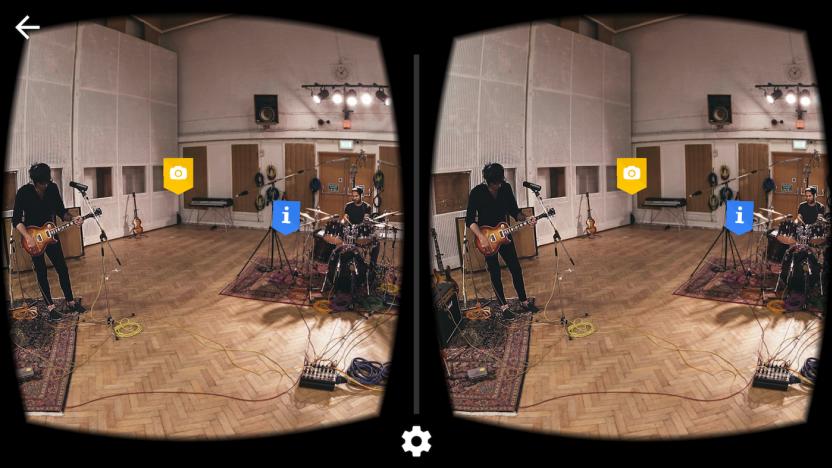
Google Cardboard takes you 'Inside Abbey Road'
Almost a year ago Google launched "Inside Abbey Road," a special site containing an interactive tour of the legendary recording studio in London. Today, the company is back with an Android app that repackages the experience for Google Cardboard. Instead of clicking around in the browser, you can slide your phone into a compatible headset and peek around naturally. It's mostly the same content, combining detailed Street View imagery, 360-degree video and some audio narration by Giles Martin, the son of record producer and "fifth Beatle" Sir George Martin.
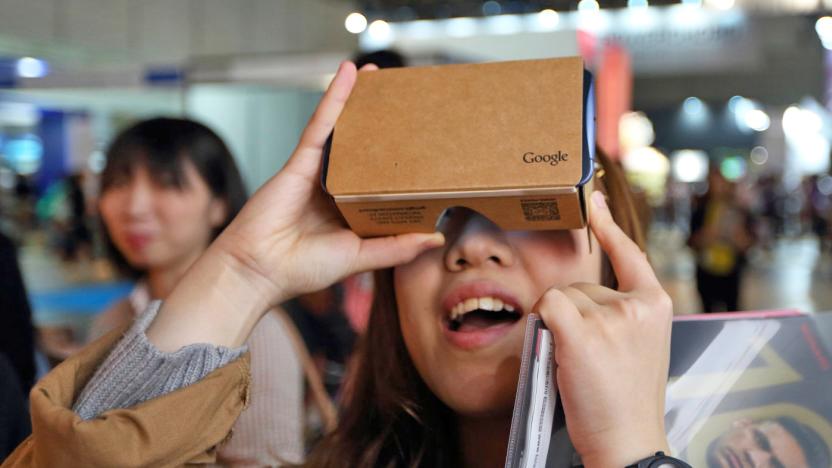
Google makes it easier to bring VR to your apps and the web
The challenge of bringing virtual reality to the masses isn't so much recording it as putting it in front of people's eyeballs. How do you plunk VR into an app without resorting to exotic code? Google can help. It's launching a VR View tool that makes it relatively easy to embed VR photos and videos in apps and websites. In software, it's just a few lines of programming with the Cardboard developer kit (which now supports iOS, we'd add). On the web, you only need embedding code like the sort you use for 2D clips.
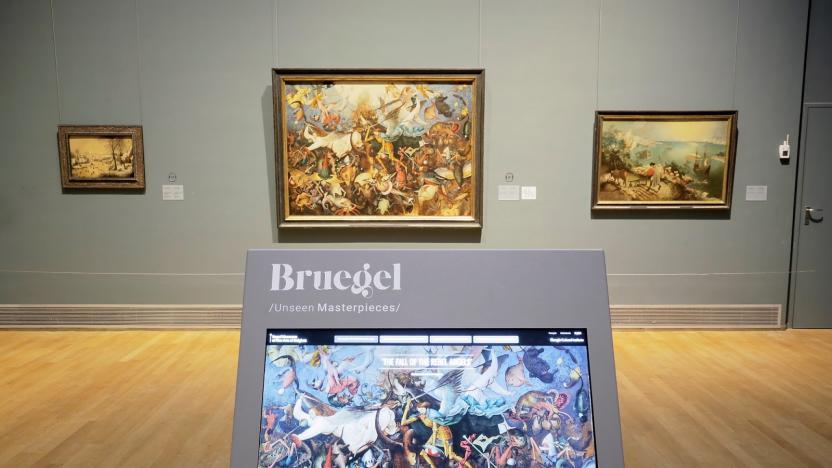
Google uses VR to put you inside a Bruegel painting
The Google Cultural institute has been working for half a decade to make the world's art accessible to everyone (with an internet connection). It's done a decent job of it so far, digitizing thousands of paintings and sculptures from hundreds of museums and galleries across the globe. More recently, it created a 360-degree video to put you inside the orchestra pit of New York's Carnegie Hall. Building on that experiment, it's now used a lot more creativity to produce a similar video for the Royal Museums of Fine Arts in Brussels, Belgium. A video that takes you inside Bruegel's The Fall of the Rebel Angels.

Dodocase's SMARTvr is a pocket-sized Cardboard alternative
When Google first introduced its Cardboard VR concept on June 25th, 2014, there were only a few ways you could try it out yourself. You could either get one for free if you were an I/O attendee, make it yourself based on Google's open-source designs or just buy one. Indeed, a few hours after the I/O keynote ended, Dodocase, a San Francisco-based maker of phone and tablet cases, became the first-ever company to make and sell Cardboard headsets. It sold 15,000 units in the first three weeks, and the headset has since become one of Dodocase's more popular products (the company also made a second gen of it last year). Now two years after it made that decision, Dodocase is ready to step up its VR efforts with a new device it's debuting on Indiegogo. It's called SMARTvr, and no, it's not made from cardboard anymore.

Google starts selling Cardboard VR viewers through its store
Believe it or not, Google hasn't offered Cardboard through its own online shop -- you've had to go through third parties to get a taste of its virtual reality experience. Logic is finally prevailing, though, as Google has started offering Cardboard through its in-house store. Pay $15 ($25 for two) and you'll get the bring-your-own-phone VR solution straight from the source. The offering isn't alone, either. It's joining a new VR section in the Google Store that highlights the Mattel View-Master and other VR gear. You probably bought Cardboard a while back if you were really, really eager to give it a try, but look at it this way: this is a simpler way to see what the fuss is about if you're a relative newcomer.
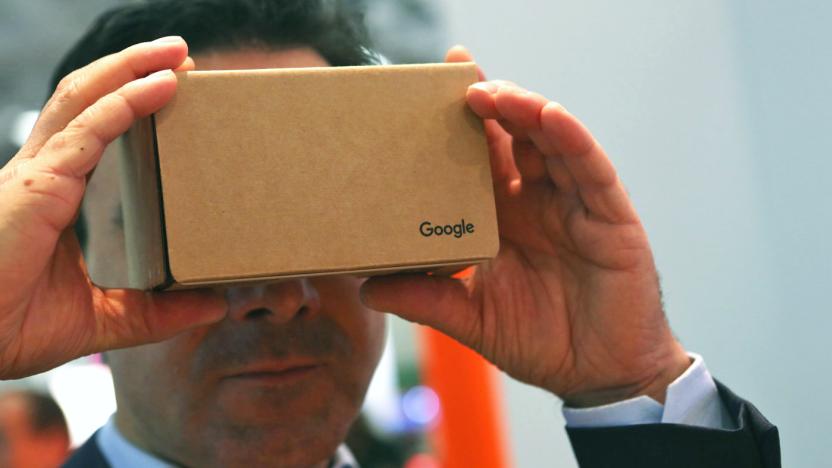
WSJ: Google is working on a standalone VR headset, too
Clues have been circulating about Google's plans for a new VR headset in recent weeks. Now, the Wall Street Journal reports that Mountain View is working on a second virtual reality device. Unlike the headset we've seen tipped already, the second gadget is said to be a standalone unit that doesn't require a phone or PC in order to work. If this is true, it will be the first device to function without being connected to a computer or mobile device. A few days ago, a report surfaced stating that Google had a new headset in the works that would be a much more advanced version of Cardboard, but would still use a handset to drive the visuals.

Valve's VR technology now works with the Unity game engine
For many gaming platforms, the litmus test these days is whether or not they get official support in Unity's game engine -- land that and many developers (and by extension, gamers) are likely to give them a closer look. Valve just got a big credibility boost, then, as Unity is introducing native SteamVR support. If a virtual reality game runs on Unity's seemingly ubiquitous code, it's that much more likely to work with the HTC Vive and other SteamVR-friendly headsets. And much like the Unreal Engine, teams can edit in VR if they want to know what a scene will look like for players.
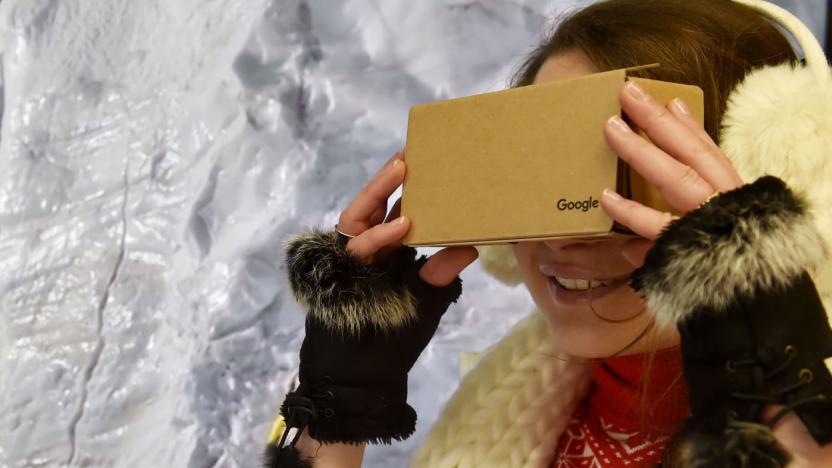
Google is reportedly releasing a VR headset this year
There were hints that Google was interested in making virtual reality hardware, and now some of the first details of that gear seem to be trickling out. Financial Times sources claim that Google's first true VR headset is effectively a more open rival to Samsung's Gear VR -- you slot in a phone from your brand of choice into a plastic housing that has its own movement sensors. It's miles above Cardboard, according to the tip. If the leak is accurate, you'd see it arrive sometime this year... alongside software that could be just as (if not more) important to the experience.

ICYMI: Underground AI delivery, sea life discovery and more
#fivemin-widget-blogsmith-image-255157{display:none;} .cke_show_borders #fivemin-widget-blogsmith-image-255157, #postcontentcontainer #fivemin-widget-blogsmith-image-255157{width:570px;display:block;} try{document.getElementById("fivemin-widget-blogsmith-image-255157").style.display="none";}catch(e){}Today on In Case You Missed It: The Xenoturbella deep sea creature doesn't have a brain, eyes or functional gut, but its genetics prove it is one of the oldest forms of ocean life. Also, it looks like a discarded purple sock.

The After Math: These numbers are 'yuge'
The GOP holding a debate without the overcooked sweetpotato that is Donald Trump wasn't even the week's biggest news. We found the world's biggest solar system, US Customs confiscated an enormous number of knockoff hoverboards and CERN began rewiring the LHC for added atom-smashy fun, to name a few.

Google Cardboard attracted 5 million users since launch
Google Cardboard made its debut in June of 2014, and has been picking up steam ever since. Mountain View offered an official update on the usage stats today, though, showing just how popular the VR viewer really is. The company says 5 million Cardboard viewers have shipped to users in just over a year and a half. What's more, those folks installed 25 million apps that are compatible with the headset, including 10 million between October and December 2015.

Google can take you on a VR trip to the Great Barrier Reef
One of Google's more exciting announcements at least year's I/O was Expeditions, a VR kit that let educators lead students on virtual field trips to far flung locales like Mars and the Great Wall of China. Now, you can add two more places to that list: The Great Barrier Reef and Buckingham Palace. The virtual Great Barrier Reef expedition was designed by none other than Sir David Attenborough and produced by Alchemy VR, while the Buckingham Palace tour was made possible thanks to the UK's Royal Collection Trust. There's even a YouTube 360 video of the Palace, so you can easily use your phone to take a private tour of the Queen's art collection.

Google's developing spatial audio for Cardboard
Google's Cardboard division, which oversees development of the VR platform and its associated software, announced on Wednesday that it is updating the platform's SDK to allow developers to integrate "spatial audio" into their apps. Spatial audio -- aka 3D or binaural audio -- is designed to shift between channels depending on the user's head position to create more immersive audio. Cardboard's new SDK will not only allow devs to determine the relative position of sounds but also emulate their material and size -- all while doing so on a smartphone's CPU. [Image Credit: Getty]

Doctors use Google Cardboard to explore a heart, save a life
Four-month-old Teegan Lexcen was born in Minnesota with a small, malformed heart, no left lung, and the faintest chance of seeing her first Christmas. Now she's recovering after open-heart surgery at Nicklaus Children's Hospital in Miami, Florida, where a team of enterprising doctors used a smartphone and Google's Cardboard VR headset to peer into her chest and save her life.

Google's interactive 'Spotlight Stories' come to YouTube
Google's Spotlight Stories started life as a partnership with Motorola. The made-for-mobile 360-degree videos let viewers dive into animated worlds created by engineers and movie makers. The latest film, "Special Delivery," arrives just in time for the holidays and was created by Aardman Animations (of Wallace and Gromit fame). Unlike most VR video, Spotlight Stories use the sensors in your phone for a more interactive experience. Look away from the main character and the main story pauses, while you unlock mini stories that only play when you focus on them. Previous shows required a special app to view them, but Special Delivery is launching on directly on YouTube -- as the ubiquitous video site bolsters its VR library.

Watch the Patriots practice in VR through Google Cardboard
You can't currently get a first-hand experience of an NFL game short of becoming a football star and strapping on a helmet, but Bank of America and Visa are promising the next best thing. They've launched a virtual reality experience that lets you see the New England Patriots' training sessions using Google Cardboard. If you've ever wanted to see Gillette Stadium from the field or watch Tom Brady lead a practice play, you now have an easy way to do it. Only Android users can get the full-on VR experience, unfortunately, but any Patriots fan who can watch 360-degree YouTube clips can check it out.[Image credit: John Tlumacki/The Boston Globe via Getty Images]

Cardboard Fender Stratocaster shreds without being shredded
The Signal Snowboard crew is known for its unorthodox snowboard projects. Now the team has partnered with Ernest Packaging and Fender's custom shop to create a playable cardboard Stratocaster. Except for its corrugated body and neck, the guitar is outfitted with the usual pickups, electronics, frets and knobs found on traditional wood guitar. The end result is something you can see through while shredding.

The 'Star Wars' VR experience for Google Cardboard is here
The Star Wars hype machine's rolling at full force. But that shouldn't surprise you, considering the new film from the world-famous franchise is debuting soon, on December 18th. As part of Disney's promotional efforts leading up to Star Wars: The Force Awakens, ILMxLAB (Lucasfilm's, Industrial Light & Magic's and Skywalker Sound's immersive entertainment laboratory) has created a virtual reality experience for Google Cardboard. Enter Jakku Spy, a VR project that ties directly into the latest installment of the movie series. The experience, available for iOS and Android, is designed to take you into another reality and put you in the role of a Resistance secret agent on Jakku, a desert environment derived out of The Force Awakens.










